Soviet computing equipment in the preparation of the voucher privatization of the Russian Federation in 1992
The elections to the State Duma of the Federal Assembly of the Russian Federation of the 7th convocation held in 2016, which were based on the State automated system of the Russian Federation “Elections” , intended for the automation of electoral actions, recalled how it was being prepared for similar events in the 90s of the past century. From the point of view of the IT-industry and IT-technologies, these were the hardest years, computers and printers were not just not enough, in many places they simply did not exist.
 And in these years, in addition to all sorts of elections, the voucher privatization took place in Russia. And if only citizens over the age of 18 could participate in the elections, all citizens of Russia received privatization checks.
And in these years, in addition to all sorts of elections, the voucher privatization took place in Russia. And if only citizens over the age of 18 could participate in the elections, all citizens of Russia received privatization checks.
It was required in the shortest possible time to carry out painstaking work on the preparation of lists for obtaining privatization checks. If we talk about the preparation of lists for elections, then everything happened in a similar way.
')
If this happened today, then there would be no problems: there are ready-made databases, there are scanners and text recognition tools, there are personal computers, printers, and nothing else.
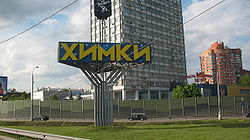 I had to take a direct part in the preparation of lists for obtaining privatization checks (vouchers) by the population of Khimki, Moscow Region.
I had to take a direct part in the preparation of lists for obtaining privatization checks (vouchers) by the population of Khimki, Moscow Region.
As of early 1992, the population of Khimki was more than 130,000 people. Lists, as a rule, were handwritten, or, at best, typed on a typewriter. It was necessary to reconcile all the lists, re-print them and transfer them to the branches of Sberbank for issuing vouchers, which began on October 1, 1992.
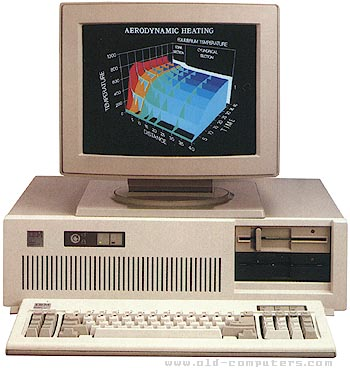 And one of the PC AT computers was free from computers in the city administration. What to say about the administration of Khimki, if the privatization pillars themselves had little. “We had no heat, no copier, no fax, no food ,” recalled the American consultant Jonathan Hay . But the solution was found. In one of the military institutes, in spite of everything, the first domestic computer network was created using fiber (I will try to tell you about it in detail next time). So, the EC-1007 terminal computers were involved in this network.
And one of the PC AT computers was free from computers in the city administration. What to say about the administration of Khimki, if the privatization pillars themselves had little. “We had no heat, no copier, no fax, no food ,” recalled the American consultant Jonathan Hay . But the solution was found. In one of the military institutes, in spite of everything, the first domestic computer network was created using fiber (I will try to tell you about it in detail next time). So, the EC-1007 terminal computers were involved in this network.
What is a terminal computer EC-1007?
It was conceived and created as a small-sized, highly reliable stationary computer, part of the third phase of the Unified System of Electronic-Computing Machines (EU computers) of the countries of the socialist community (there was such a community of countries in Europe, something like the current European Union, but only headed by the USSR ). Its small size can be judged by a photograph of a part of the machine room (60 square meters), specially created for its placement, including the containment area (in the background of the photo):

For a complete picture, we will give some technical characteristics (compare with something modern) the EC-1007 computer:
I think that's enough.
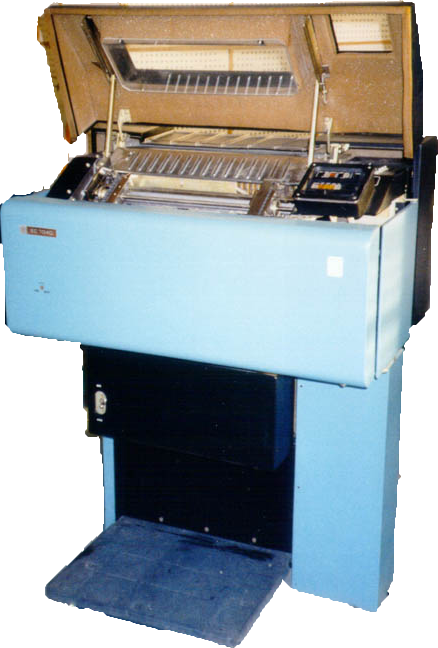 The undoubted advantage of this machine was the availability of devices for wide alphanumeric printing. The mobile operating system of the UNIX / UNIX OS “MOS EC” family was chosen as the operating system, and the “Ingres” DBMS , supporting the relational data model, was chosen as the database management system. The design of the database (DB) was based on the fact that in the end it was supposed to be the prototype of the database of the population of Khimki and be installed on that single PC AT, which was discussed above.
The undoubted advantage of this machine was the availability of devices for wide alphanumeric printing. The mobile operating system of the UNIX / UNIX OS “MOS EC” family was chosen as the operating system, and the “Ingres” DBMS , supporting the relational data model, was chosen as the database management system. The design of the database (DB) was based on the fact that in the end it was supposed to be the prototype of the database of the population of Khimki and be installed on that single PC AT, which was discussed above.
The matter remained for the small - to enter data into the database, to reconcile and print the final lists of recipients of privatization checks. Speech as already mentioned, was about 130,000 people.
For the preparation of the information, we had 8 7920 displays on the EC-1007 computer, as well as about a dozen EU-1840/1841 domestic personal computers.
Here are the main characteristics of the EU-1840 personal computer:
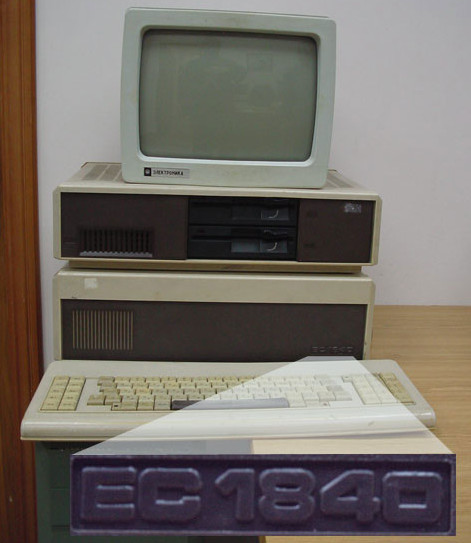
Now you understand what wealth we all have in our home PCs, smartphones, etc.
At the same time, there was no interface / software for transferring data from EU-1840/1841 personal computers to EC-1007 computers.
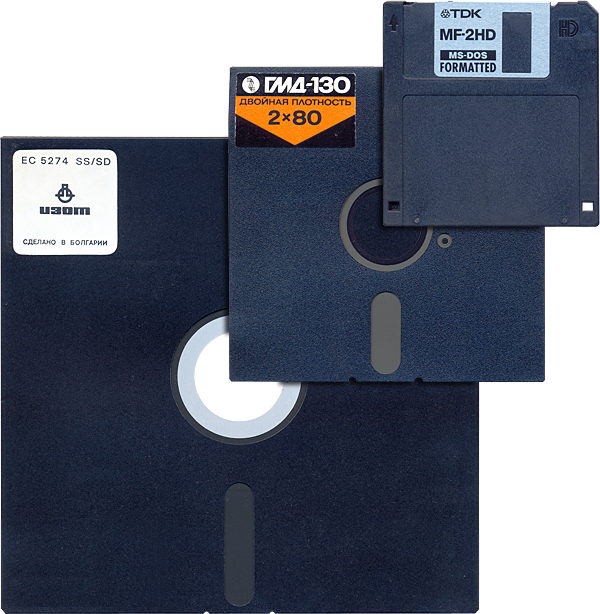 But what is surprising, both on personal computers and on the EC-1007 computer there were disk drives for floppy disk drives (floppy disk drives).
But what is surprising, both on personal computers and on the EC-1007 computer there were disk drives for floppy disk drives (floppy disk drives).
But here's a bad luck, if the personal computers used the size of 5.25 inches in size, then on the EC-1007 computer this size was already 8 inches.
And here a solution was found.
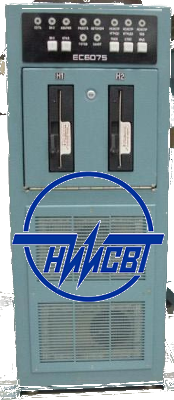 By this time, by order of the Defense Ministry in the city of Kirov, the Scientific Research Institute of Computer Science and Technology had developed the UGMD EC-6075 for an EU computer, including the EU-1007, for 5.25-inch floppy disks. And the work began to boil: on personal computers on floppy disks, lists of the population of Khimki were being prepared. Then these data from the GMD through the EC-6075 rack were transferred to the EC-1007 computer and recorded in the database. When the database was formed, the generation and printing of lists of recipients of privatization checks remained.
By this time, by order of the Defense Ministry in the city of Kirov, the Scientific Research Institute of Computer Science and Technology had developed the UGMD EC-6075 for an EU computer, including the EU-1007, for 5.25-inch floppy disks. And the work began to boil: on personal computers on floppy disks, lists of the population of Khimki were being prepared. Then these data from the GMD through the EC-6075 rack were transferred to the EC-1007 computer and recorded in the database. When the database was formed, the generation and printing of lists of recipients of privatization checks remained.
It should be noted that the MS DOS or Windows 3.0 OS was on personal computers, and the EU ISO operating system (in fact, UNIX) on the EU-1007 and had to take these features into account. Who today does not know the utility DOS2UNIX !
The work was done enormous, everything was done for the first time, but it was done with honor.
And on October 1, 1992, vouchers were issued in all branches of Sberbank of the Russian Federation in Khimki.
Well, the sale of the century ended June 30, 1994. This was the beginning of the creation of a unified database of the population of Khimki.
The beginning of the privatization process
 And in these years, in addition to all sorts of elections, the voucher privatization took place in Russia. And if only citizens over the age of 18 could participate in the elections, all citizens of Russia received privatization checks.
And in these years, in addition to all sorts of elections, the voucher privatization took place in Russia. And if only citizens over the age of 18 could participate in the elections, all citizens of Russia received privatization checks.It was required in the shortest possible time to carry out painstaking work on the preparation of lists for obtaining privatization checks. If we talk about the preparation of lists for elections, then everything happened in a similar way.
')
If this happened today, then there would be no problems: there are ready-made databases, there are scanners and text recognition tools, there are personal computers, printers, and nothing else.
 I had to take a direct part in the preparation of lists for obtaining privatization checks (vouchers) by the population of Khimki, Moscow Region.
I had to take a direct part in the preparation of lists for obtaining privatization checks (vouchers) by the population of Khimki, Moscow Region.As of early 1992, the population of Khimki was more than 130,000 people. Lists, as a rule, were handwritten, or, at best, typed on a typewriter. It was necessary to reconcile all the lists, re-print them and transfer them to the branches of Sberbank for issuing vouchers, which began on October 1, 1992.
 And one of the PC AT computers was free from computers in the city administration. What to say about the administration of Khimki, if the privatization pillars themselves had little. “We had no heat, no copier, no fax, no food ,” recalled the American consultant Jonathan Hay . But the solution was found. In one of the military institutes, in spite of everything, the first domestic computer network was created using fiber (I will try to tell you about it in detail next time). So, the EC-1007 terminal computers were involved in this network.
And one of the PC AT computers was free from computers in the city administration. What to say about the administration of Khimki, if the privatization pillars themselves had little. “We had no heat, no copier, no fax, no food ,” recalled the American consultant Jonathan Hay . But the solution was found. In one of the military institutes, in spite of everything, the first domestic computer network was created using fiber (I will try to tell you about it in detail next time). So, the EC-1007 terminal computers were involved in this network.What is a terminal computer EC-1007?
Terminal computer EC-1007
It was conceived and created as a small-sized, highly reliable stationary computer, part of the third phase of the Unified System of Electronic-Computing Machines (EU computers) of the countries of the socialist community (there was such a community of countries in Europe, something like the current European Union, but only headed by the USSR ). Its small size can be judged by a photograph of a part of the machine room (60 square meters), specially created for its placement, including the containment area (in the background of the photo):

For a complete picture, we will give some technical characteristics (compare with something modern) the EC-1007 computer:
- A central processor with a capacity of 100,000 (I emphasize one hundred thousand) operations per second;
- RAM with a capacity of 1 to 4 MB;
- Two drives with removable magnetic disks (NSMD) with a capacity of 100 MB (compare with today's flash drives).
I think that's enough.
 The undoubted advantage of this machine was the availability of devices for wide alphanumeric printing. The mobile operating system of the UNIX / UNIX OS “MOS EC” family was chosen as the operating system, and the “Ingres” DBMS , supporting the relational data model, was chosen as the database management system. The design of the database (DB) was based on the fact that in the end it was supposed to be the prototype of the database of the population of Khimki and be installed on that single PC AT, which was discussed above.
The undoubted advantage of this machine was the availability of devices for wide alphanumeric printing. The mobile operating system of the UNIX / UNIX OS “MOS EC” family was chosen as the operating system, and the “Ingres” DBMS , supporting the relational data model, was chosen as the database management system. The design of the database (DB) was based on the fact that in the end it was supposed to be the prototype of the database of the population of Khimki and be installed on that single PC AT, which was discussed above.The matter remained for the small - to enter data into the database, to reconcile and print the final lists of recipients of privatization checks. Speech as already mentioned, was about 130,000 people.
For the preparation of the information, we had 8 7920 displays on the EC-1007 computer, as well as about a dozen EU-1840/1841 domestic personal computers.
Personal computer EU-1840
Here are the main characteristics of the EU-1840 personal computer:

- The processor is built on the basis of a 16-bit MP KM1810VM86, which has a speed of over 1 million op./s., An 8-level interrupt system, 4-channel direct memory access mechanism from high-speed blocks, a programmable system timer;
- RAM is 256 or 640 KB;
- As an external storage device (OTD), two HDDs with a diameter of 133 mm (5.25 inches), a useful capacity of 320 Kb and an exchange rate of 250 Kbps are used.
Now you understand what wealth we all have in our home PCs, smartphones, etc.
The solution of the problem
At the same time, there was no interface / software for transferring data from EU-1840/1841 personal computers to EC-1007 computers.
 But what is surprising, both on personal computers and on the EC-1007 computer there were disk drives for floppy disk drives (floppy disk drives).
But what is surprising, both on personal computers and on the EC-1007 computer there were disk drives for floppy disk drives (floppy disk drives).But here's a bad luck, if the personal computers used the size of 5.25 inches in size, then on the EC-1007 computer this size was already 8 inches.
And here a solution was found.
 By this time, by order of the Defense Ministry in the city of Kirov, the Scientific Research Institute of Computer Science and Technology had developed the UGMD EC-6075 for an EU computer, including the EU-1007, for 5.25-inch floppy disks. And the work began to boil: on personal computers on floppy disks, lists of the population of Khimki were being prepared. Then these data from the GMD through the EC-6075 rack were transferred to the EC-1007 computer and recorded in the database. When the database was formed, the generation and printing of lists of recipients of privatization checks remained.
By this time, by order of the Defense Ministry in the city of Kirov, the Scientific Research Institute of Computer Science and Technology had developed the UGMD EC-6075 for an EU computer, including the EU-1007, for 5.25-inch floppy disks. And the work began to boil: on personal computers on floppy disks, lists of the population of Khimki were being prepared. Then these data from the GMD through the EC-6075 rack were transferred to the EC-1007 computer and recorded in the database. When the database was formed, the generation and printing of lists of recipients of privatization checks remained.It should be noted that the MS DOS or Windows 3.0 OS was on personal computers, and the EU ISO operating system (in fact, UNIX) on the EU-1007 and had to take these features into account. Who today does not know the utility DOS2UNIX !
The work was done enormous, everything was done for the first time, but it was done with honor.
The process has begun
And on October 1, 1992, vouchers were issued in all branches of Sberbank of the Russian Federation in Khimki.
Well, the sale of the century ended June 30, 1994. This was the beginning of the creation of a unified database of the population of Khimki.
Source: https://habr.com/ru/post/370055/
All Articles